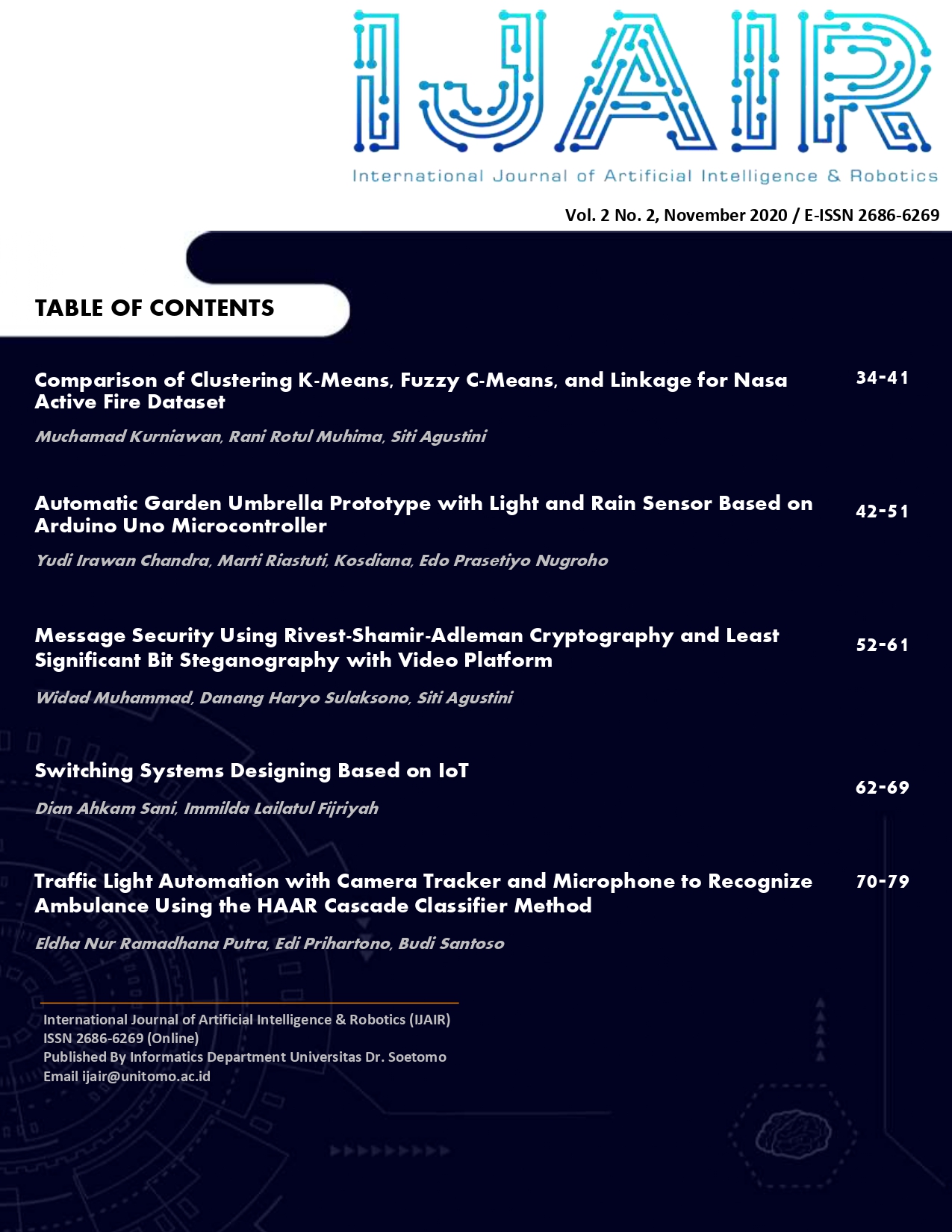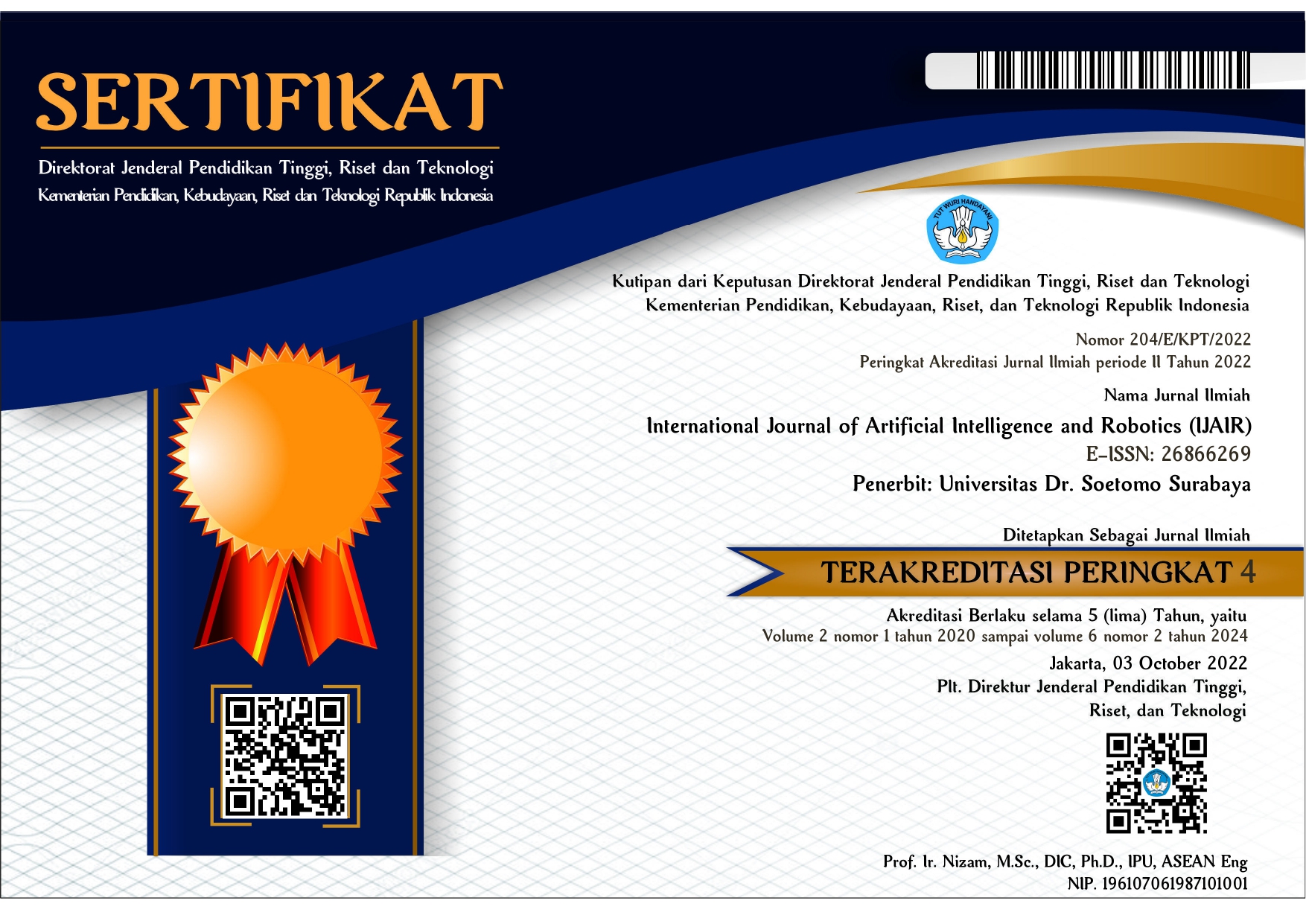[1]Widianto, Mochammad Haldi. “Pengaplikasian Sensor Hujan dan LDR untuk Lampu Mobil Otomatis Berbasis Arduino Unoâ€. RESISTOR (elektRonika kEndali telekomunikaSI tenaga liSTrik kOmputeR), 2018, 1.2: 79-84.
[2]Yudatama, Yusuf Pribadi, et al. “Jemuran Otomatis Menggunakan Sensor LDR, Sensor Hujan Dan Sensor Kelembaban Berbasis Arduino Unoâ€. Jurnal Teknik Komputer, 2020, 6.1: 21-30.
[3]Banjarnahor, Togap Munaz, et al. “Jemuran Pintar Dengan Sensor Ldr, Sensor Hujan, Sensor Suhu Dan Sensor Kecepatan Angin Berbasis Arduinoâ€. Building of Informatics, Technology and Science (BITS), 2019, 1.2: 75-81.
[4]Frank D. Petruzella., “Elektronika Industriâ€, Penerbit Andi, Yogyakarta.
[5]Novianti, K., Lubis, C., dan Tony, “Perancangan Prototipe Sistem Penerangan Otomatis Ruangan Berjendela berdasarkan Intensitas Cahayaâ€, Seminar Nasional Teknologi Informasi, 2012.
[6]Pratama, Violetta Surya, et al. “Prototype Jemuran Otomatis Menggunakan Sensor Ldr, Sensor Hujan Dan Sensor Kelembapan Berbasis Arduino Unoâ€. JITK (Jurnal Ilmu Pengetahuan Dan Teknologi Komputer), 2018, 4.1: 91-98.
[7]Yudi Kristyawan, Achmad Dicky Rizhaldi, "An Automatic Sliding Doors Using RFID and Arduino", International Journal of Artificial Intelligence & Robotics (IJAIR), 2020, 2, 1: 13 – 21.
[8]Nainggolan, Sallye Handayani. "Perancangan Alat Pembuka dan Penutup Atap Otomatis pada Pengeringan Biji Kopi Berbasis Mikrokontroler Atmega 8." 2018.
[9]Sitorus, Juan Evans. "Penggunaan LDR Dan Sensor Air pada Simulasi Alat Kontrol Atap Otomatis Berbasis Arduino Uno.", 2019.
[10]Ulinuha, Agus, and Ivan Fajarianto Putro. "Tirai Garasi Dengan Buka-Tutup Otamatis Menggunakan Sensor Hujan dan LDR Dengan Pengendali Arduino Uno." The 9th University Research Colloqium (Urecol) 9.4 2019.
[11]Sokop, Steven J., Dringhuzen J. Mamahit, and Sherwin RUA Sompie. "Trainer Periferal Antarmuka Berbasis Mikrokontroler Arduino Uno." Jurnal Teknik Elektro Dan Komputer 5.3 (2016): 13-23.
[12]Prihatmoko, Dias. "Perancangan dan implementasi pengontrol suhu ruangan berbasis mikrokontroller arduino uno." Simetris: Jurnal Teknik Mesin, Elektro dan Ilmu Komputer 7.1 (2016): 117-122.
[13]Wang, Yanping, and Zongtao Chi. "System of wireless temperature and humidity monitoring based on Arduino Uno Platform." 2016 Sixth International Conference on Instrumentation & Measurement, Computer, Communication and Control (IMCCC). IEEE, 2016.
[14]Bauer, Waldemar, and Aleksandra Kawala-Janik. "Implementation of bi-fractional filtering on the arduino uno hardware platform." Theory and Applications of Non-Integer Order Systems. Springer, Cham, 2017. 419-428.
[15]Sugathan, Akshay, et al. "Application of Arduino based platform for wearable health monitoring system." 2013 IEEE 1st International Conference on Condition Assessment Techniques in Electrical Systems (CATCON). IEEE, 2013.
 Abstract views: 918
,
Abstract views: 918
,
 PDF downloads: 524
PDF downloads: 524
 Design of Automatic Garden Umbrella Prototype with Light and Rain Sensor Based on Arduino Uno Microcontroller downloads: 0
Design of Automatic Garden Umbrella Prototype with Light and Rain Sensor Based on Arduino Uno Microcontroller downloads: 0
 Design of Automatic Garden Umbrella Prototype with Light and Rain Sensor Based on Arduino Uno Microcontroller downloads: 0
Design of Automatic Garden Umbrella Prototype with Light and Rain Sensor Based on Arduino Uno Microcontroller downloads: 0
 Turnitin downloads: 0
Turnitin downloads: 0
















